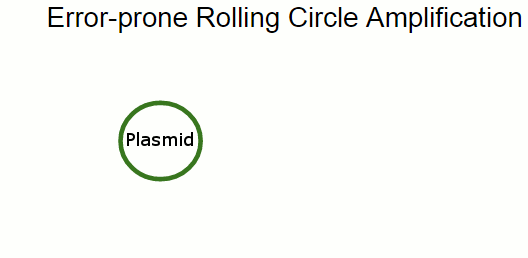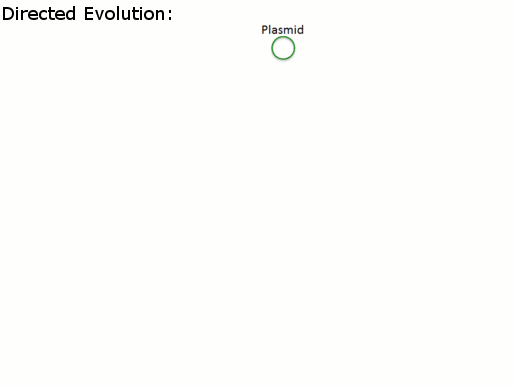Team:SF Bay Area DIYBio/Description
Project Description
Bio Sun Block (Sunscreen for Bacteria)
Introduction
We are very concerned about bacteria getting sunburned and skin cancer (just joking). BUT we are going to make e.coli bacteria create mycosporine.
Genetic Engineering is arguably the greatest leap forward in human understanding and manipulation of nature in the whole history of mankind, above and greater than the invention of fire and the wheel combined. This project makes use of Genetic Engineering to force a bacteria to create a compound that it would never make and then use the tools of evolution to enhance that ability.
E.coli normally live in the human gut (large intestine) and thus in total darkness. We will to inject several modified genes so that e.coli are tolerant of UV (Ultra Violet Light). One of the possible chemical compounds that can make the bacteria tolerant to uv is Mycosporine. However that is a compound and DNA is only good at making proteins, therefore we need to have the bacteria create proteins and enzymes that modify the proteins to become compounds.
After designing the process, we want to make it better, so we will employ “directed evolution” to make the process better. We think that if we stress the bacteria with UV that they will start to evolve better and more efficient mechanisms to protect themselves from UV.
So that is our project, start some bacteria making sunscreen then subject them to a lot of sunshine and they will evolve to make more and better sunscreen.
What is sunscreen
Sunscreen is a chemical compound that absorbs UV thus preventing the UV from damaging cells. We tend to put sunscreen on our skin to protect the underlying skin cells from sunlight mostly UV. Sunscreen will absorb specific UV spectrum, the more (wider) the UV spectrum the better the effect of the sunscreen. Each chemical compound will absorb a part of the spectrum therefore it is best to have several different UV absorbing chemicals.
History of sunscreen
Early civilizations used a variety of plant products to help protect the skin from sun damage. For example, ancient Greeks used olive oil for this purpose, and ancient Egyptians used extracts of rice, jasmine, and lupine plants whose products are still used in skin care today.Zinc oxide paste has also been popular for skin protection for thousands of years.
In 1946, Swiss chemist Franz Greiter introduced what may have been the first effective modern sunscreen. The product was called Gletscher Crème (Glacier Cream).
Mycosporine
Mycosporine-like amino acids (MAAs) are small secondary metabolites produced by organisms that live in environments with high volumes of sunlight, usually marine environments. So far there are up to 20 known MAAs identified. They are commonly described as “microbial sunscreen” but their function is not limited to sun protection.
Though most MAA research is done on their photo-protective capabilities, they are also multifunctional secondary metabolites that have many cellular functions. MAAs are effective antioxidant molecules and are able to stabilize free radicals within their ring structure. In addition to protecting cells from mutation via UV radiation and free radicals, MAAs are able to boost cellular tolerance to desiccation, salt stress, and heat stress.
Sun Protection Factor (SPF)
The SPF rating is a measure of the fraction of sunburn-producing UV rays that reach the skin. For example, "SPF 15" means that 1/15th of the burning radiation will reach the skin, assuming sunscreen is applied evenly at a thick dosage of 2 milligrams per square centimeter (mg/cm2). A user can determine the effectiveness of a sunscreen "by multiplying the SPF factor by the length of time it takes for him or her to suffer a burn without sunscreen." Thus, if a person develops a sunburn in 10 minutes when not wearing a sunscreen, the same person in the same intensity of sunlight will avoid sunburn for 150 minutes if wearing a sunscreen with an SPF of 15.
Physics of sunscreen
The SPF is an imperfect measure of skin damage because invisible damage and skin aging are also caused by ultraviolet type A (UVA, wavelengths 315–400 or 320–400 nm), which does not primarily cause reddening or pain. According to a 2004 study, UVA also causes DNA damage to cells deep within the skin, increasing the risk of malignant melanomas.
UV rays carry high energy and are suspected of causing cancer through damage to the skin's DNA. High energy in sunlight comes in two forms:
UV-A (320-400 nanometers)
UV-B (290-320 nanometers)
The UVB waves tend to receive more criticism than the less energetic UVA waves.
But, in actual fact, both UVB and UVA can damage the skin. Unfortunately, the chemistry of sunscreen, in most cases, does not enable the blocking of UVA as effectively, if at all, as they do UVB.
Some typical sunscreensChemistry of sunscreen
PABA
4-Aminobenzoic acid (also known as para-aminobenzoic acid or PABA because the number 4 carbon in the benzene ring is also known as the para position) is an organic compound with the formula H2NC6H4CO2H. PABA, a white-grey crystalline substance, is only slightly soluble in water. It consists of a benzene ring substituted with an amino group and a carboxyl group.
Mycosporine
Mycosporine–like amino acids are rather small molecules (<400Da). The structures of over 30 Mycosporine-like amino acids have been resolved and all contain a central cyclohexenone or cyclohexenimine ring and a wide variety of substitutions. The ring structure is thought to absorb UV light and accommodate free radicals. All MAAs absorb ultraviolet light, typically between 310 and 340 nm. It is this light absorbing property that allows MAAs to protect cells from harmful UV radiation. Biosynthetic pathways of specific MAAs depend on the specific MAA and the organism that is producing it. These biosynthetic pathways often share common enzymes and intermediates with other major biosynthetic pathways. An example of this is the shikimate pathway that is classically used to create phenylalanine; many intermediates and enzymes from this pathway are utilized in MAA synthesis.



